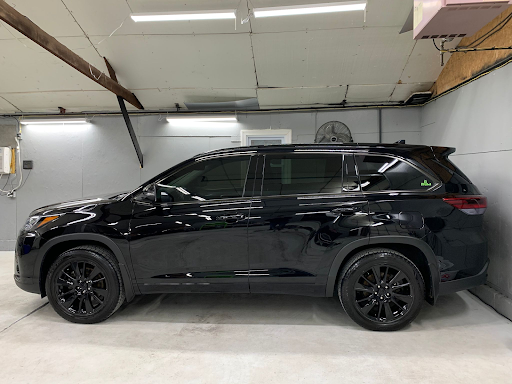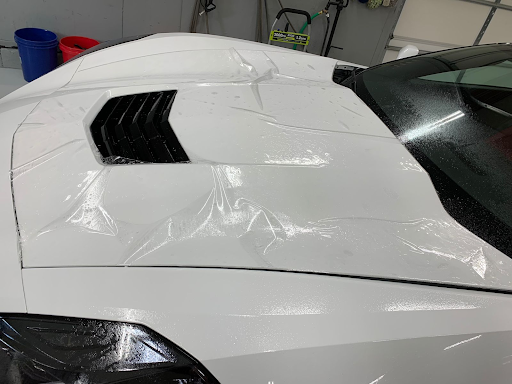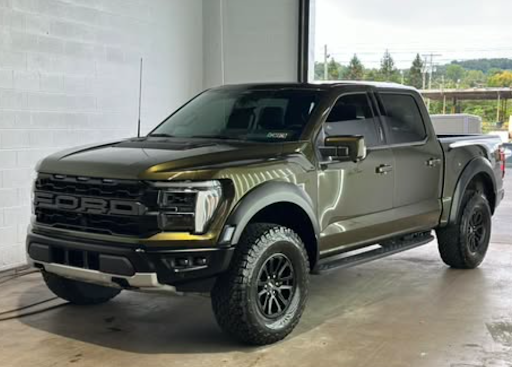PPF Thickness Guide: Determining Optimal Thickness for Paint Protection
Protecting your vehicle's paint from scratches, chips, and road debris requires choosing the right Paint Protection Film (PPF) thickness. The key question becomes: what thickness offers the best balance between protection and maintaining your vehicle's appearance? This guide explains PPF thickness options, helping you select the optimal solution for your driving habits and protection needs.

The Short Answer: 8 Mils for Most Applications
For optimal performance, Paint Protection Film typically ranges from 6 to 10 mils in thickness, with 8 mils providing the ideal balance between effective protection against scratches, chips, and environmental damage while maintaining flexibility and proper surface adherence.
Understanding PPF Thickness Measurements
Paint Protection Film thickness is measured in mils, where one mil equals 0.001 inches. This measurement directly impacts the film's protective capability and application characteristics.
PPF thickness typically ranges from 4 to 10 mils, with most applications falling between 6 and 8 mils. This range provides robust protection while remaining flexible enough to conform to your vehicle's unique curves and details.
At 4 mils, the film offers high flexibility with low durability, suitable for light protection on decorative trim. The 6 mil thickness provides moderate durability and flexibility, making it ideal for standard protection on daily drivers. Moving to 8 mils delivers high durability with good flexibility, perfect for heavy-duty protection on luxury vehicles. At the extreme end, 10 mil film offers very high durability with limited flexibility, designed for racing applications and extreme conditions.
Common PPF Thickness Options
6 Mil Film: The Balanced Choice
The 6 mil option strikes an excellent balance between protection and flexibility, making it ideal for everyday vehicles navigating urban environments. This thickness provides adequate defense against minor scratches and road debris while adhering smoothly to contoured surfaces.
This thickness works best for daily commuters facing moderate driving conditions where budget considerations play a role in the decision. The 6 mil film handles typical urban hazards while maintaining cost-effectiveness for standard protection needs.
8 Mil Film: Premium Protection
The 8 mil film offers superior durability for vehicles encountering harsh conditions. Whether navigating gravel roads, construction zones, or severe weather, this thickness provides enhanced protection against impacts and scratches.
Luxury and high-performance vehicles benefit most from 8 mil thickness, especially when maximum protection takes priority over cost considerations. The enhanced protection proves particularly valuable for long-term value preservation, though installation requires more skill and experience due to the film's reduced flexibility compared to thinner options.
Factors Influencing Thickness Selection
Driving Conditions
Your typical driving environment significantly impacts the optimal PPF thickness. City driving conditions generally require 6 mil protection against moderate hazards, while highway driving benefits from 8 mil thickness to defend against high-speed debris. Off-road driving and construction zone exposure demand 8-10 mil thickness to handle severe impact risks.
Vehicle Type and Value
High-performance and luxury vehicles benefit from thicker protection due to higher speeds that generate greater impact forces. Premium paint finishes require enhanced preservation, and the significant investment value justifies premium protection costs.
Aesthetic Considerations
While thicker films provide superior protection, they may slightly alter your vehicle's appearance. Show cars and vehicles prioritizing pristine visual presentation may favor thinner applications or specific finish types to maintain the desired aesthetic appeal.
Optimal Thickness by Vehicle Area
High-Impact Zones
The hood and front bumper face the greatest exposure to road debris, rocks, and insects. These areas require 8 mil thickness to provide robust protection against chips and scratches while effectively absorbing minor impacts.
Moderate-Impact Areas
Side mirrors and door edges encounter frequent contact from parking situations and minor impacts. These areas perform well with 6-8 mil thickness, offering sufficient protection without excessive weight or installation complexity.
Low-Impact Surfaces
Roof and trunk areas experience minimal debris impact but require protection from environmental factors like UV exposure and bird droppings. These surfaces benefit from 4-6 mil films that provide adequate coverage without unnecessary expense.
Cost vs. Protection Analysis
Thicker PPF provides superior protection but comes at a higher cost. Film pricing typically ranges from $5-8 per square foot for 4 mil thickness, increasing to $8-12 for 6 mil, $12-16 for 8 mil, and $16-20 for 10 mil applications.
Luxury vehicles often justify premium protection costs due to their value and exposure risks. Daily drivers may find 6-8 mil optimal for balancing protection and budget considerations. Consider potential repair costs versus prevention expenses when making your thickness decision, as proper protection often costs less than paint damage repairs.
Professional Installation vs. DIY
Professional Installation Benefits
Expert installation ensures precise application without bubbles or misalignment while providing proper film adhesion for maximum longevity. Professional installation includes warranty coverage for peace of mind and brings extensive experience with various thickness applications.
At Prestige Auto Spa York, our certified technicians have comprehensive experience installing PPF of all thicknesses, ensuring your investment provides maximum protection and aesthetic appeal.
DIY Considerations
While DIY installation can reduce costs, thicker films present significant challenges. Reduced flexibility makes positioning difficult, and precision requirements increase substantially with thickness. Installation mistakes can compromise both protection and appearance while eliminating warranty coverage for installation issues.
Maximizing Your PPF Investment
Proper Maintenance
Regular care extends PPF life and performance. Use non-abrasive cleaning products and rinse thoroughly after washing. Address stains promptly to prevent permanent setting that could compromise the film's appearance and protective qualities.
Professional Inspections
Periodic professional evaluations identify early signs of wear or damage while revealing areas requiring attention. These inspections also highlight opportunities for preventive maintenance that can extend your film's effective lifespan.
Environmental Protection
While PPF provides excellent protection, minimize exposure to extreme conditions when possible to maximize film longevity and maintain optimal protective performance.
Making the Right Choice
Selecting optimal PPF thickness depends on your specific needs and priorities. Choose 6 mil thickness for daily commuting in moderate conditions where budget considerations are primary and standard protection meets your requirements.
Select 8 mil thickness when your vehicle has high value or performance capability, faces exposure to harsh driving conditions, or when maximum protection takes priority over cost considerations.
Consider 10 mil thickness only for extreme conditions such as racing or severe off-road use, when ultimate protection matters regardless of cost, or for professional and commercial vehicle applications requiring maximum durability.
Your Investment in Vehicle Protection
Paint Protection Film thickness selection significantly impacts both protection level and investment cost. Understanding your driving conditions, vehicle type, and protection priorities enables informed decision-making that preserves your vehicle's appearance and value for years to come.
Ready to protect your investment with professional PPF installation?
Contact Prestige Auto Spa York today to discuss the optimal thickness solution for your vehicle and driving needs.




